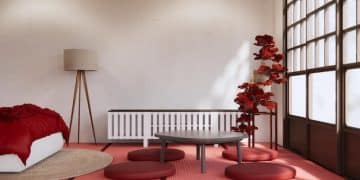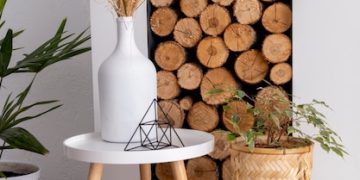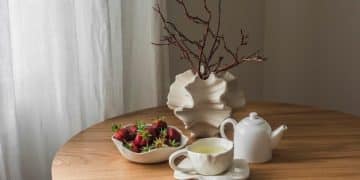The Influence of Korean Art: Key Elements in US Contemporary Design
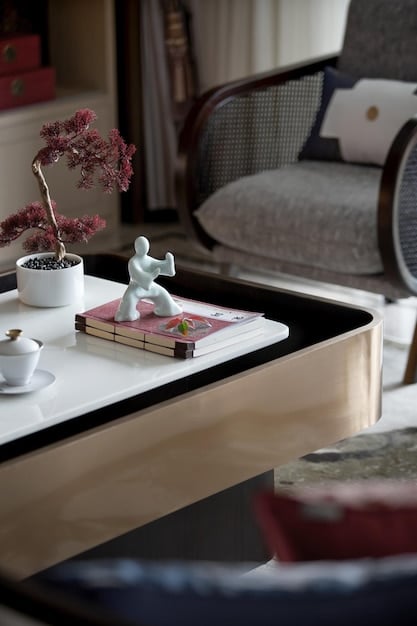
The influence of Korean art on contemporary US design is seen in various elements, including minimalist aesthetics, natural materials, vibrant color palettes inspired by traditional Korean garments and Dancheong, and the incorporation of traditional motifs into modern pieces.
The influence of Korean art on contemporary US design: key elements to know are becoming increasingly evident, shaping aesthetics and functionalities in unique ways within the American design landscape.
Exploring the Essence of Korean Art
Korean art, with its rich history and unique aesthetic principles, has long been recognized for its profound influence on various aspects of global culture. In recent years, its imprint on contemporary US design has become increasingly noticeable, enriching the creative landscape with its distinctive elements.
Understanding the core characteristics of Korean art is crucial to appreciating its impact on American design. From its emphasis on harmony and balance to its deep-rooted connection with nature, Korean art offers a wealth of inspiration and design philosophies.
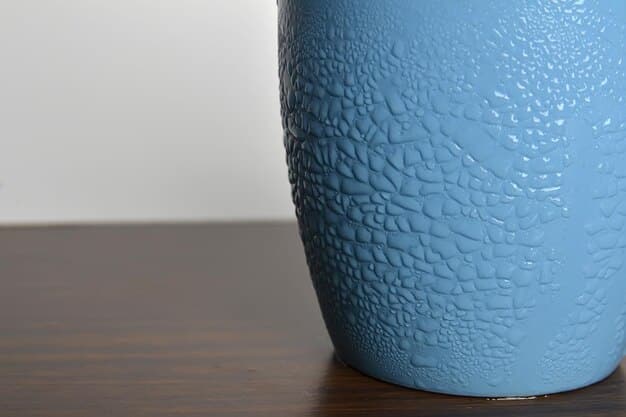
Key Characteristics of Traditional Korean Art
Traditional Korean art is characterized by several distinct features that reflect the country’s cultural values and aesthetic sensibilities. These elements are now finding resonance in contemporary US design.
- Naturalism: Korean art often seeks to capture the essence of nature, depicting landscapes, flora, and fauna with meticulous detail and a deep sense of reverence.
- Minimalism: Characterized by simplicity and austerity, this approach aims to reveal the essence of objects and forms, reflecting a Zen-like appreciation for the beauty of emptiness.
- Harmony and Balance: Emphasizing symmetrical and balanced compositions, Korean art aims to create a sense of visual equilibrium and tranquility.
These core features create a rich tapestry of artistic expression that harmonizes the natural world with human creativity, establishing a unique sensibility that is being emulated in other design fields.
Minimalist Aesthetics in US Interior Design
One of the most significant ways Korean art influences contemporary US design is through its minimalist aesthetics. The emphasis on simplicity, clean lines, and uncluttered spaces resonates with those seeking calming and functional environments.
The minimalist approach, deeply rooted in Korean art and philosophy, prioritizes essential elements, fostering a sense of tranquility and focus within the interior space. This is in contrast to excessive ornamentation and clutter.
Implementing Korean Minimalism in American Homes
Implementing Korean-inspired minimalism in American homes involves conscious choices that prioritize functionality and aesthetic coherence. This creates spaces that are not just efficient but also visually harmonious and restful.
- Decluttering: Removing non-essential items helps create a cleaner and more organized space.
- Neutral Color Palettes: Using soft, muted tones contributes to a calming and cohesive environment.
- Functional Furniture: Selecting furniture pieces that serve multiple purposes maximizes space efficiency.
This transformative approach allows individuals to design living spaces that promote mental well-being and practical livability, redefining the concept of home.
By embracing minimalist principles, US interior design reduces visual noise and focuses on the intrinsic beauty of form and function, contributing to more serene and balanced living spaces.
The Role of Natural Materials
Natural materials play a vital role in both Korean art and contemporary US design. The appreciation for raw, organic textures and sustainable resources reflects a deeper connection with nature and mindful consumption.
Korean art often features materials such as wood, bamboo, paper, and stone, highlighting their natural beauty and intrinsic qualities. This emphasis on materials aligns with the contemporary US design focus on sustainability and eco-friendly practices.

Integrating Natural Elements into US Design
Integrating natural elements into US design not only enhances aesthetics but also promotes environmental consciousness. By choosing sustainable materials, designers can create living spaces that are both beautiful and eco-friendly.
- Wood: Using reclaimed or sustainably sourced wood in furniture and flooring brings warmth and character to interiors.
- Bamboo: Incorporating bamboo in furniture and decorative accents creates a lightweight and durable solution.
- Natural Fibers: Employing natural fibers like cotton, linen, and hemp in textiles promotes breathability and eco-friendliness.
By choosing materials thoughtfully, designers contribute to a more sustainable and aesthetically pleasing environment.
The integration of these natural materials creates a harmonious blend of aesthetic appeal and environmental responsibility, reflecting a growing awareness of ecological balance and ethical design practices.
Color Palettes Inspired by Korean Art
Color palettes in Korean art, deeply rooted in traditional garments and architectural finishes, provide an elegant framework for contemporary US design. These colors evoke cultural heritage and add a unique aesthetic depth to modern interiors.
Dancheong, the traditional Korean painting style adorning wooden buildings, features a vibrant and complex palette, incorporating colors like red, blue, green, yellow, and white. These colors are not only decorative, but also symbolic, reflecting cosmological elements and warding off evil spirits.
Applications of Traditional Korean Colors in Modern US Spaces
Applying these traditional Korean colors thoughtfully can transform contemporary US spaces, injecting cultural richness and historical depth. The key is to balance vibrancy with subtlety, respecting the original intent while adapting to modern contexts.
Consider:
- Using soft, muted versions of traditional colors for walls and large surfaces to create a calm and inviting atmosphere.
- Incorporating bold, vibrant hues in accent pieces like cushions, artwork, and decorative items to add pops of color and visual interest.
- Combining traditional Korean colors with contemporary neutrals like gray and beige to achieve a balanced and harmonious look. This approach respects the traditional while fitting seamlessly into modern aesthetics.
The influence of Dancheong and other traditional Korean color schemes enhances the aesthetic depth and cultural resonance of contemporary US design.
The Influence of Korean Motifs and Patterns
Korean motifs and patterns, abundant in historical artifacts and art, contribute unique visual elements to contemporary US design. These designs incorporate traditional imagery, providing a symbolic depth often absent in more generic aesthetics.
Common Korean motifs include:
- Crane: Symbolizes longevity and peace.
- Lotus Flower: Represents purity and enlightenment.
- Mountains and Water: Reflecting harmony with nature.
These motifs add cultural and historical depth to design, enriching the experience of the beholder.
Blurring Boundaries: Korean Art in US Furniture Design
US furniture designers are increasingly taking cues from Korean craftsmanship, resulting in a unique blend of Eastern and Western design principles. This cross-cultural fusion brings a fresh perspective to modern furniture, reflecting a global sensibility.
Designers find inspiration in:
- Low Profile Designs: Emulating traditional Korean seating arrangements that encourage groundedness and relaxation.
- Natural Finishes: Utilizing natural oils and waxes to enhance the inherent beauty of wood.
- Textural Variety: Combining smooth surfaces with textured elements like woven straw or natural fibers.
This fusion contributes to creating furniture that is not only aesthetically pleasing but also deeply rooted in cultural values and artistic traditions.
| Key Concept | Brief Description |
|---|---|
| 🎨 Minimalist Aesthetics | Focus on simplicity, clean lines, and uncluttered spaces. |
| 🌿 Natural Materials | Use of wood, bamboo, and natural fibers for organic textures. |
| 🎨 Korean Motifs | Incorporation of cranes, lotus flowers, and landscape elements. |
FAQ: Korean Art and US Design
Korean minimalism often incorporates natural elements and organic forms, emphasizing harmony with nature. Western minimalism tends to focus more on industrial materials and stark, geometric designs.
The main colors include red, blue, green, yellow, and white, often seen in Dancheong (traditional Korean painting), with each color symbolizing different elements and carrying cultural significance.
Naturalism reflects a deep respect for nature and a desire to capture its essence in art. It emphasizes harmony with the environment and the intrinsic beauty found in natural forms.
Korean motifs, such as cranes and lotus flowers, carry symbolic meanings rooted in Korean culture. Their use adds cultural and historical resonance to US design, providing narratives beyond aesthetics.
Common materials include wood, bamboo, paper, and natural fibers like linen and cotton. These materials bring organic textures and a sense of warmth to the design.
Conclusion
The burgeoning influence of Korean art on contemporary US design showcases a rich cultural exchange, fostering innovation and creativity. As American designers continue to embrace the key elements and principles of Korean art, they enrich the design landscape, producing spaces that are not just aesthetically pleasing, but also culturally deep and ecologically mindful.
